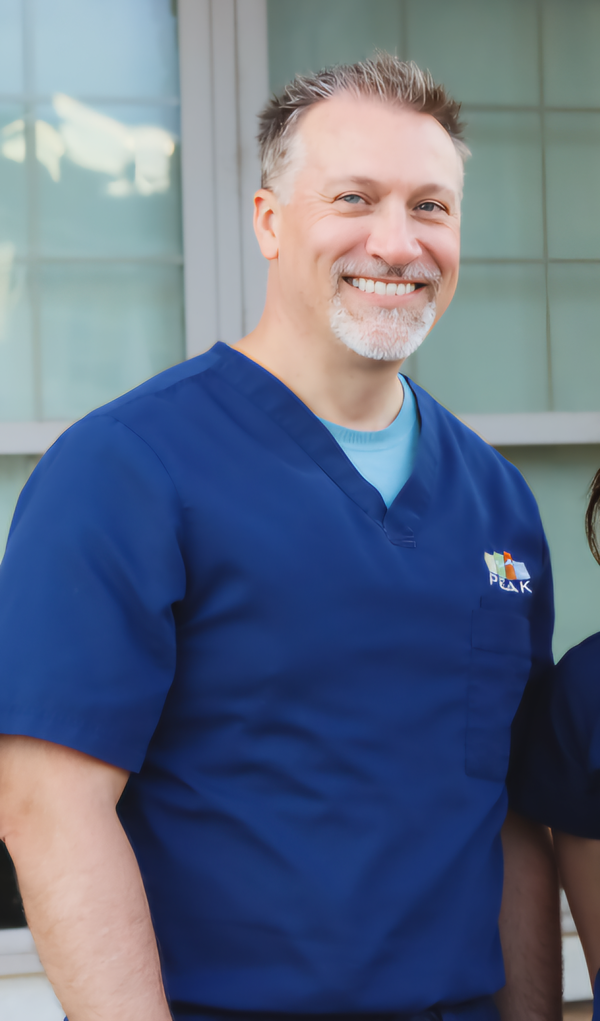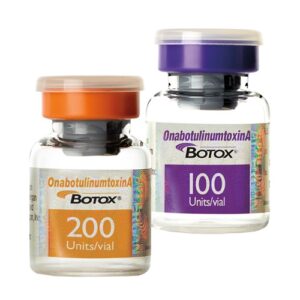
By Amy Diana Ramirez
Broomfield, Colorado, (The Hollywood Times) 10/18/2024

With intense focus and pin-point precision otolaryngologist Justin Michael King, MD, restores his patients’ ability to comfortably verbally communicate – a daily function most of us take for granted. These patients of King have been diagnosed with Spasmodic Dysphonia (SD), sometimes called Dysphonia Spastica.
SD is a chronic, neurological voice disorder characterized by tremors, hoarseness, vocal cut-outs, and glottal fry (an abnormally low, gravelly pitch). It can sound as if the speaker is being strangled or is about to burst into tears. At best, it sounds like someone getting over a cold or laryngitis. SD can make everyday exchanges strained or they may take more effort.
Laryngeal injections of botulinum toxin are now the standard therapy for SD. Insurance companies recognize them as such, covering the cost of treatment in many insured cases. Botulinum toxin is a naturally occurring neurotoxin that weakens muscle by blocking the release of acetylcholine. Acetylcholine triggers the muscle contractions that cause SD. False vocal cords, also known as the ventricular or vestibular folds, are thick mucous membrane folds that sit above the true vocal cords. They have no muscle elements, nonetheless Botox works on them as well. Most of Dr. Justin Michael King’s patients have only their false cords injected, though some require both false and actual cord injections. Four injections in and around the larynx is customary. The dosage is considerably lower than what is used in cosmetic Botox injections though the product is the same.
The intraoral technique which Dr. King employs begins with spraying a numbing solution down the patient’s nostrils. Once the anesthetic begins to take effect, the patient phonetically gargles yet another anesthetic solution that numbs the throat. When the solutions have fully anesthetized the patient’s throat and nostrils, a flexible camera is fed through the nostril. The camera projects a clear view of the patient’s larynx onto an adjacent TV screen enabling Dr. King to see the treatment area. He can then hold the tongue aside and insert a cannula (thin tube) attached to a needle through the patient’s open mouth. A precise volume of Botox can then be delivered through the cannula. Treatment start-to-finish time can vary depending on the individual patient’s anatomy and their coping skills but typically takes thirty minutes. Some patients’ gag reflex comes into play, making for a more challenging session. Nevertheless, Dr. King’s calm demeanor and gentle suggestion to breathe slowly helps ease the patient through the procedure and the patient’s normal voice is on its way. Within a couple of weeks, patients may even forget that they have a voice problem. Botox injections last approximately three months, dysphonia gradually resurfaces, then another session with Colorado’s voice saving otolaryngologist is needed.
Botox injected into the larynx of King’s patient. Click the YouTube link below:
https://www.youtube.com/shorts/hHZhl40dBkc

SD is rare but there are well-know people with the condition. Country singer Shania Twain and Robert Francis Kennedy Jr., the environmental lawyer, author, and former presidential candidate have been open about their diagnoses. Scott Adams, writer and cartoonist of “Dilbert,” and Twain underwent successful SD surgeries in the US. RFK, Jr. reported that he underwent a somewhat successful SD surgery in Japan. Such surgery can be risky; sometimes the ability to sing or project one’s voice is lost, and the speaking voice can worsen post-surgery.
A recent speech by Kennedy displays the state of his dysphonia

On the other hand, Kennedy’s sister, Kerry Kennedy, does not sound as if she is being treated for SD.
Activist Kerry Kennedy on Instagram.
https://www.instagram.com/reel/C5lROuQu25P/?igsh=aW01ejRobHZpam15
The fact that both RFK Jr. and his sister have and their grandmother had SD suggests it is a genetic disorder. However, it typically does not occur in more than one living member of a family.
SD rarely occurs in people younger than age thirty. Comedian Shawn Hartline is an exception to this. Hartline wrote a fictional short film “Cookie” that depicts a young female with SD.
Cookie, a film by SD patient/comedian Shawn Hartline
The exact cause of SD is still unknown, but research suggests that it may be related to abnormalities in the brain’s basal ganglia, which is responsible for motor control and coordination.
Possible risk factors include:
- A genetic predisposition
- Head or neck injuries
- Neurological disorders, such as Parkinson’s disease or a dystonia
- Infections such as Lyme Disease, as in vocalist Shania Twain’s case
- Vaccine injury, as Robert F. Kennedy Jr. believes caused his SDBecause there is no definitive cure for SD, the “Walk for Talk” is taking place now through October 20th, 2024. Hosted by Dysphonia International, the Walk is used to raise funds for research on SD and related vocal conditions.

Thanks to fundraisers like Walk for Talk, botulinum toxin type A has been studied and utilized to temporarily resolve SD symptoms.
The Hollywood Times had the opportunity to interview Dr. King on October 15, 2024.
Dr. King was asked where he received his training in this atypical intraoral method of injecting Botox. “My mentor, otolaryngologist Blake Simpson,” he explained. Justin Michael King, 10/15/24.

Simpson is the innovator of the false vocal cord (FVF) injection method. This procedure foregoes electromyography (EMG), which has been used to assist in the standard Botox injection method. With EMG, an electrode needle is inserted into the neck muscles through the skin. Electric activity alerts the doctor that a vocal cord has been located. Patients who do not undergo FVF must wait significantly longer before the Botox settles in properly and a non-spasmodic voice emerges. In the meantime, the voice can sound breathy and/or oddly highly pitched, like Mickey Mouse. It can take up to a month for a fully functional voice to break through.

With FVF, it takes about ten days to get to the vocal “sweet spot.” King mentioned that this is of particular benefit for performers who depend on their voice for their income. Being unavailable to work for four months out of the year can be inconvenient and possibly job-jeopardizing for some stricken with SD who are being treated with FVF.
The intraoral technique of administering FVF has a downside; Dr. King mentioned that some patients have difficulty undergoing this method because the injections and gargling can trigger a gag reflex and coughing in the patient. Having a camera snaked down one’s nose can be as off-putting as having a needle inserted in one’s voice box. Now imagine having them both occurring in the same treatment. The injections themselves only take about three to four minutes and the payoff is HUGE. It’s a life-changing treatment for some who for years have dealt with a compromised voice.
“FVF injection can also be done using a scope and passing the needle through the neck — so the novel part is injecting the FVF regardless of whether one goes intraoral or through the neck (transcutaneous)”. King, 10/17/24
THT: “What are some of the professions of patients whose voices you have treated and been able to restore?”
King responded, “I’ve treated many singers and teachers over the years. Patients are from all walks of life who really depend on their voice for a living. We all need to communicate, and it’s amazing how much most of us take that for granted… until we lose it. Losing one’s voice can significantly impact the quality of life. I think that’s why I like treating voice disorders so much; it’s personally gratifying when I can help people literally get their voice back.”
When asked if there is any advice for readers regarding preventive measures to protect their voice, King said that staying self-aware of one’s voice is key. For example, being mindful of vocal changes such as hoarseness and taking action – making an appointment with an ENT if changes lasts more than two to three weeks. Five symptoms that should not be ignored for long, include the following:
- Cough with or without coughing up blood
- Changes in your voice, such as hoarseness or not speaking clearly
- Difficulty swallowing
- Ear pain
- A sore throat
Such symptoms may indicate a vocal disorder, or they can suggest something more serious including cancer. Although voice treatment is King’s passion, he also finds great gratification in removing early-stage malignant or precancerous tumors from the larynx of afflicted patients. In such cases, chemotherapy and radiation may be avoided, and the survivor goes back to a relatively normal life. King’s advice can’t be emphasized enough: Do NOT ignore lasting symptoms.
Once or twice a year Dr. King guest lectures at higher education institutions including the University of Colorado, Boulder. He covers voice-related topics such as the Care of the Professional Voice.
When asked who some of his favorite celebrity vocalists or speakers are, he simply stated that he admires live performers who use their voices.
With his passion for voice care and state-of-the art methods, Dr. King has become the KING OF VOICE in Colorado and beyond. The results of his SD patients speak for themselves.
If you believe the information herein would be of interest to your own laryngologist/ENT, please share this article with them as well as anyone who suffers from symptoms of SD.
PEAK ENT and VOICE Center Website King practices most days at his Broomfield location (other locations include Golden, Brighton, and Denver, Colorado). He is open to new patients.
Dysphonia International Website
Media Credits:
Video Credits of larynx: Amy Diana Ramirez
Photo Credit of Justin Michael King, MD
Photo Credits of Justin Michael King: Peak ENT and Voice Center
Photo Credit of Blake Simpson, MD; Blake Simpson, M
Photo Credit Kerry Kennedy on Instagram
Video Credit of Bobby Kennedy: New York Post
Video Credit of Kerry Kennedy: Instagram
Photo Credit RFK, Jr. on Instagram
Photo Credit Walk for Talk: Dysphonia International
Photo Credit Botox Bottle: Getty Images